
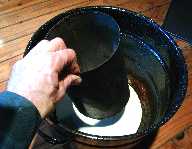
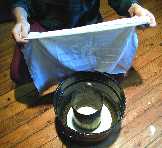
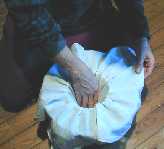


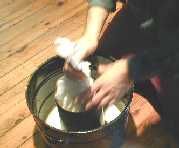

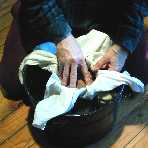
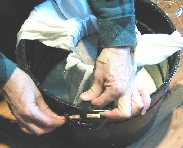

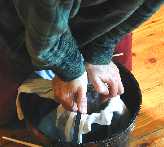

Pressing the fresh curds to remove excess whey is important since spoilage of the cheese is hastened by retention of too much water in the finished cheese. This cheese press can be fashioned from items you may already have in your kitchen, or which should not be difficult to obtain. This protocol is intended to press the curd from making follows the recipe to turn five gallons of milk into cheese . Click the last two images ( 13 & 14 ) to see full sized pictures for what the assembled press looks like.
CHEESE PRESS MATERIALS











